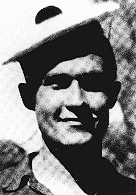You searched for: INS,脸书代竞价排名【TG飞机:@bapingseo】谷歌收录提交端口【TG电报:@bapingseo】石家庄谷歌竞价方案【Telegram:@bapingseo】21点秘诀官网登录mg棋牌下网站?3fMvAr/660322.html
<< Previous | Displaying results 251-300 of 401 for "INS,脸书代竞价排名【TG飞机:@bapingseo】谷歌收录提交端口【TG电报:@bapingseo】石家庄谷歌竞价方案【Telegram:@bapingseo】21点秘诀官网登录mg棋牌下网站?3fMvAr/660322.html" | Next >>
-
Anti-Jewish Boycott
Timeline EventApril 1, 1933. On this date, the Nazi Party and its affiliates organized a nationwide boycott of Jewish-owned businesses in Germany.
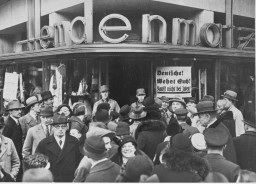
-
Mutiny of German Sailors in Kiel
Timeline EventNovember 3, 1918. On this day, German sailors in Kiel revolt, and protests against World War I spread.
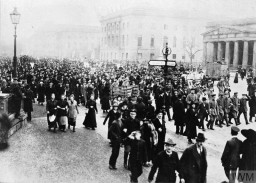
-
German Invasion of Poland
Timeline EventSeptember 1, 1939. On this date, Germany invaded Poland and initiated World War II in Europe.
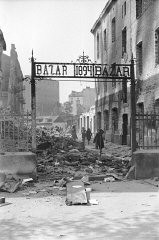
-
The Nazi Rise to Power
ArticleThe Nazi Party was one of a number of right-wing extremist political groups that emerged in Germany following World War I. Learn about the Nazi rise to power.
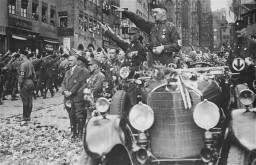
-
Gerda Blachmann Wilchfort describes the mood of passengers on the "St. Louis" after they were denied entry into Cuba
Oral HistoryGerda and her parents obtained visas to sail to Cuba on the "St. Louis" in May 1939. When the ship arrived in Havana harbor, most of the refugees were denied entry and the ship had to return to Europe. Gerda and her parents disembarked in Belgium. In May 1940, Germany attacked Belgium. Gerda and her mother escaped to Switzerland. After the war, they were told that Gerda's father had died during deportation.

-
The United States and the Holocaust, 1942–45
ArticleWhy did the United States go to war? What did Americans know about the “Final Solution”? How did Americans respond to news about the Holocaust? Learn more.

-
Kristallnacht
ArticleOn November 9–10, 1938, the Nazi regime coordinated a wave of antisemitic violence. This became known as Kristallnacht or the "Night of Broken Glass." Learn more

-
Herzogenbusch Main Camp (Vught)
ArticleThe Herzogenbusch concentration camp in the Netherlands began functioning in January 1943. Learn about its establishment, administration, prisoners, and conditions there.

-
Feiga Kisielnicki
ID CardFeiga lived with her husband, Welwel, and their three children in the small, predominantly Jewish town of Kaluszyn, which was 35 miles east of Warsaw. The Kisielnickis were religious and spoke Yiddish in their home. Feiga was a housewife and her husband was a merchant who often traveled, by horse and wagon, to Warsaw on business. 1933-39: Germany recently invaded Poland, and several days ago, German forces fought Polish troops in a battle right here in Kaluszyn. Half the town, including Feiga's house, has…
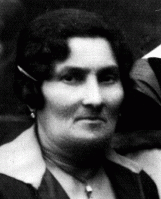
-
Erna Schumer Unger
ID CardErna was the second of four daughters. Her religious Jewish parents moved the family to Essen, Germany, in 1905 when Erna was 21. Erna married when she was in her twenties, but the couple had no children and her husband passed away. After living as a widow for some years, Erna remarried to Jacob Unger, a salesman, and together they had two children, Max and Dora. 1933-39: When Hitler became chancellor of Germany in 1933, Jacob went to Amsterdam to explore the possibility of the family settling there.…
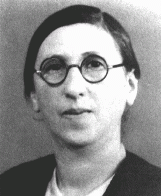
-
Schloma Wolf (Willy) Szapiro
ID CardBorn to a Jewish family, Willy left Poland at age 20 and emigrated to Palestine. He became active in the workers' organization to end the British mandate there. His activities led to his arrest on May 1, 1931. After serving a two-year prison sentence, Willy was expelled from Palestine. 1933-39: In 1933 Willy left Palestine for Austria, where he joined the ranks of the workers' movement. The economic depression in Austria gave momentum to the movement's cause, and Willy and his friends were closely watched…
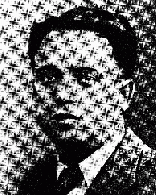
-
Nelly Adler
ID CardNelly was the youngest of three daughters born to Jewish parents in Liege, a French-speaking industrial city in eastern Belgium. Her Yiddish-speaking parents had moved there from Czechoslovakia a year before Nelly was born. The Adlers were one of only a few Jewish families in the largely Catholic city. Nelly grew up speaking French with her friends at school. 1933-39: The Adler's apartment was above a cafe and across the street from a Catholic church. Her parents ran a successful tailoring business from…
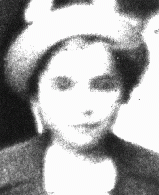
-
Lucien-Louis Bunel
ID CardLucien was the fourth of eight children born to poor Catholic parents in a small town in northwestern France. Lucien began his seminary studies in nearby Rouen at the age of 12. Following two years of military service, he resumed his religious studies in 1922 and was ordained as a priest three years later. He joined the Carmelite religious order in 1931, and became Father Jacques. 1933-39: In 1934 Father Jacques moved to the town of Avon, where he established a boys' school,…

-
Mojsze Kisielnicki
ID CardMojsze, his wife Raizel and their three children lived 35 miles east of Warsaw in the small, predominantly Jewish town of Kaluszyn. Mojsze had gone to Jewish schools and supported Zionist ideals. By the early 1930s, he owned a wholesale grocery store, a restaurant and a gas station, all of which were located on the heavily traveled main road. 1933-39: Mojsze is at the World's Fair in Paris with his sister, Ruchel. She immigrated here in the 1920s with her husband, who owns a successful tailor shop. When…
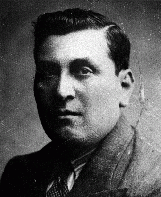
-
Abram Kisielnicki
ID CardThe oldest of three children, Abram was born to Jewish parents in the small, predominantly Jewish town of Kaluszyn, 35 miles east of Warsaw. Abram's father owned a wholesale grocery store, a restaurant and a gas station, all of which were located on the heavily traveled main road. Abram went to public elementary school and also received religious instruction. 1933-39: Abram was 21 when the Germans invaded Poland. Abram, his father, and his brother Majlech fled eastward towards the Soviet Union because…
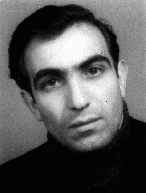
-
Fischel Felman
ID CardFischel was the oldest of seven children in a Yiddish-speaking, religious Jewish family. When he was a small child, his parents moved the family to Sokolow Podlaski, a manufacturing town in central Poland with a large Jewish population of about 5,000. Fischel was sent to study at a religious school. In 1932, when he was 21 years old, Fischel was inducted into the Polish army. 1933-39: After two years in the Polish cavalry, Fischel returned to Sokolow Podlaski, where he apprenticed to become a carpenter…
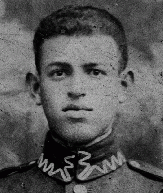
-
Bernburg T4 Facility
ArticleBernburg was the fifth of six centralized killing centers established by German authorities within the context of the Nazi “euthanasia,” or T4, program.

-
Martin Niemöller: "First they came for..."
ArticleLearn about the origins and legacy of Pastor Martin Niemöller's famous postwar words, “First they came for the socialists, and I did not speak out…”
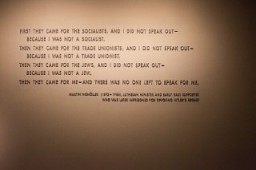
-
The "We Will Never Die" Pageant
Article"We Will Never Die" was a 1943 musical stage performance that raised awareness among Americans about the murder of European Jews. Learn more.

-
Ruth Berkowicz Segal describes deciding to leave Warsaw shortly after the outbreak of war
Oral HistoryWhen German forces invaded Poland in September 1939, Ruth's father fled to eastern Poland. Upon the Soviet occupation of eastern Poland, he fled to Lithuania. Ruth left Warsaw with two friends to find her father and later joined him in Vilna. After Soviet forces occupied Lithuania, Ruth and her father obtained transit visas for Japan, but only Ruth obtained a Soviet exit visa. Her father insisted she leave and not wait for him. Ruth traveled by the Trans-Siberian Railroad across the Soviet Union to…
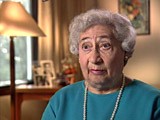
-
Olympic athlete John Woodruff describes his experiences of discrimination
Oral HistoryIn 1936, John Woodruff was one of 18 African Americans on the US Olympic team competing in Berlin. He won the gold medal for the men's 800-meter race. In this clip from an interview on May 15, 1996, Woodruff describes his personal experiences of racial discrimination during and after the Olympic Games of 1936.
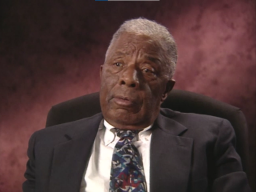
-
Elie Wiesel Timeline and World Events: 1928–1951
ArticleSurvivor Elie Wiesel devoted his life to educating the world about the Holocaust. Learn about key events in the world and his life from 1928–1951.

-
Theresienstadt: Key Dates
ArticleExplore key dates in the history of the Theresienstadt camp/ghetto, which served multiple purposes during its existence from 1941-45.
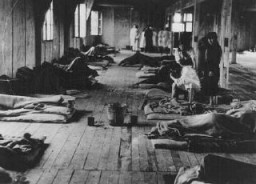
-
Theresienstadt: Concentration/Transit Camp for German and Austrian Jews
ArticleLearn about the role of Theresienstadt in the deportation of German and Austrian Jews to killing sites and killing centers in the east.

-
Adolf Hitler: 1919-1924
ArticleAdolf Hitler established himself as absolute Führer, or leader, of the Nazi Party by 1921. Learn more about Hitler in the years 1919-1924.

-
Julien Bryan
ArticleUS filmmaker and photographer Julien Bryan was one of the few western photographers left in Warsaw upon the German invasion of Poland in September 1939.
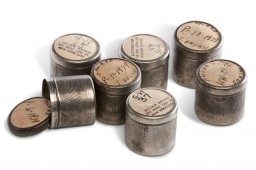
-
Glossary of Terms and Individuals in the Nazi Judicial System
ArticleLearn more about the Holocaust Encyclopedia’s key terms and individuals in the Nazi judicial system.
-
Romania
ArticleEven before joining the Axis alliance in 1940, Romania had a history of antisemitic persecution. Learn more about Romania before and during World War II.

-
Book Burning
ArticleBook burning is the ritual destruction by fire of books or other written materials. The Nazi burning of books in May 1933 is perhaps the most famous in history. Learn more.

-
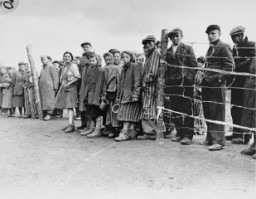
-
The Vélodrome d'Hiver (Vél d'Hiv) Roundup
ArticleThe Vélodrome d'Hiver (or Vél d'Hiv) roundup was the largest French deportation of Jews during the Holocaust. It took place in Paris on July 16–17, 1942.
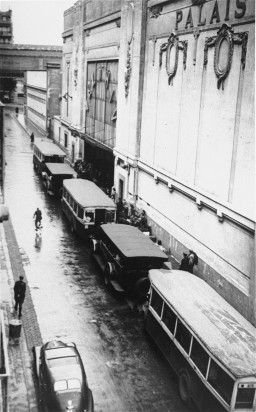
-
Personal Stories: Jewish Partisans
ArticleBrowse a series of short biographies from the Jewish Partisan Educational Foundation.

-
Warsaw Ghetto Uprising
ArticleThe Warsaw ghetto uprising was the largest, symbolically most important Jewish uprising, and first urban uprising in German-occupied Europe.
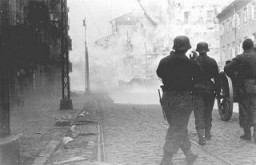
-
Invasion of the Soviet Union, June 1941
ArticleOn June 22, 1941, Nazi Germany invaded the Soviet Union. The surprise attack marked a turning point in the history of World War II and the Holocaust.

-
Page 1 of Letter from US Soldier Aaron Eiferman
Timeline EventApril 27, 1945. On this date, US soldier Aaron A. Eiferman wrote a letter to his wife describing conditions in Kaufering IV in Germany.
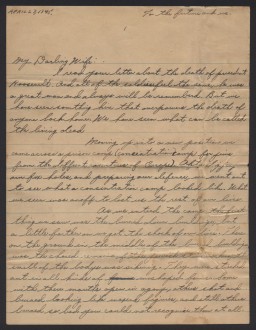
-
Axis Powers in World War II
ArticleThe three principal partners in the Axis alliance were Germany, Italy, and Japan. Learn more about the Axis powers in WW2.

-
The Holocaust in Odesa
ArticleIn October 1941, Romania, an ally of Nazi Germany, perpetrated mass killings of Jews in Odesa. Learn more about the Holocaust in Odesa and Ukraine.

-
Simone Weil
ID CardSimone was the oldest of two children born to a Jewish family in the small village of Ringendorf. When she was 3 her family moved to Strasbourg. Her father made his living breeding sheep. Simone and her younger brother were both active in a Jewish scouting organization, Les Eclaireurs Israelites de France (EIF). Simone attended a public secondary school in Strasbourg. 1933-39: In addition to attending secondary school for five days of the week, Simone also went to a Jewish religious school on the other…

-
Welek Luksenburg
ID CardWelek grew up in Dabrowa Gornicza, an industrial town in western Poland. His father, Simcha, was a wholesale meat merchant and his mother, Rozalia, served as president of the local chapter of the Women's International Zionist Organization. Welek's older brother, Szlomo, was a dentist. The Luksenburgs were among the several thousand Jews who lived in Dabrowa Gornicza. 1933–39: Like many other children in the town, Welek attended public school. Because his family was very religious, he did not attend…

-
Abraham Bergman
ID CardAbraham was born to a Jewish family in Krasnik, a town in the Lublin district of Poland. The town had a large Jewish population. Abraham's father was a tailor. When Abraham was 2, his mother died and he was raised by his grandmother. At the age of 7, Abraham started public school. 1933-39: Abraham liked school but found it difficult. The Christian children often yelled at the Jews, "You killed our God." One year, on the day before Christmas break, some kids brought ropes tied to iron weights to school.…

-
Fischel (Philip) Goldstein
ID CardFischel was the youngest of five children. He came from a Jewish family of artisans; his father was a tailor, his uncles were furriers, and his sister was a dressmaker. Fischel started his education at a Jewish parochial school at age 3, where he studied Hebrew and Yiddish. He continued his education at Jewish private schools until age 10, when he entered Polish public schools. 1933-39: After graduating from the Polish public school system at age 14, Fischel started an apprenticeship in his father's…

-
Milica Popovic Kuhn
ID CardMilica was the fourth of nine children born to Serbian Orthodox landowners in the Croatian part of Yugoslavia. In 1922 Milica married Milan Kuhn, a Catholic Serb, in a Serbian Orthodox ceremony, and the couple moved to the Macedonian part of Yugoslavia, where Milan was working on hydroelectric projects. In 1932 the couple returned with their young daughter to live in northern Yugoslavia. 1933-39: The Kuhns lived in the city of Zrenjanin in the Vojvodina region where Milan worked as a hydroengineer…
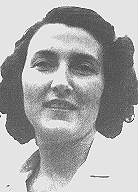
-
Judith Kalman
ID CardJudith was the only child born to a Jewish couple who lived in Hatvan, a small town 36 miles northeast of Budapest. Judith's father worked in his brother's business, marketing grains and other agricultural products purchased from local farms. When she was 3, Judith gave her first public recitation of poetry, an interest that she pursued throughout her childhood. 1933-39: Judith's family wasn't religious--they were Hungarians who happened to be Jewish, and their family was well-liked in Hatvan. But in the…

-
Pawel Zenon Wos
ID CardPawel was the oldest of four children born to Roman Catholic parents in Poland's capital of Warsaw. Pawel's father had worked for the Polish merchant marine before starting his own textile business in 1930. The family moved to a comfortable apartment near the Royal Castle and the Vistula River. Pawel excelled in sports, including basketball and tennis. His favorite sport was rowing. 1933-39: In May 1939 Pawel became an army reserve officer and went to training camp near Augustow. On the morning of…

-
Walther Hamann
ID CardWalther was born in the state of Thuringia in east central Germany. Though his parents were Lutheran, Walther became a Jehovah's Witness in 1923. After becoming a master baker and confectioner in 1924, Walther worked in various coffeehouses in Plauen, Magdeburg and Duesseldorf. In 1928 he graduated from a professional school. He married and had two sons. 1933-39: In 1933 Walther became a pastry-making manager at the Cafe Weitz on Duesseldorf's Koenigsallee. The Gestapo arrested him at the cafe in 1937…

-
Marcus Fass
ID CardMarcus, known to his family as Moniek, was one of three children born to a Jewish family in the Polish town of Ulanow. His father worked as a tailor. Ulanow's Jewish community had many of its own organizations and maintained a large library. From the age of 3, Moniek attended a religious school. He started public school when he was 7. 1933-39: In 1935 Moniek's father left for America to find a job so that his family could later join him. He sent money to them while they waited for their emigration papers.…

-
Selma Wijnberg
ID CardSelma was the youngest of the Wijnberg's four children, and the only daughter. When she was 7, her family left Groningen to start a business in the town of Zwolle [in the Netherlands]. There her parents ran a small hotel popular with Jewish businessmen traveling in the area. Every Friday there was a cattle market, and many of the cattle dealers came to the Wijnberg's hotel for coffee and business. 1933-39: At home Selma and her family were observant of Jewish tradition because her mother was religious.…
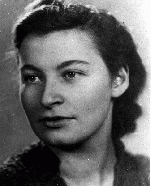
-
Henoch Kornfeld
ID CardHenoch's religious Jewish parents married in 1937. His father, Moishe Kornfeld, and his mother, Liba Saleschutz, had settled in Kolbuszowa, where Henoch's mother was raised. There, Liba's father bought the newlyweds a home and started his new son-in-law in the wholesale textile business. 1938-39: Henoch was born in late 1938, and was raised among many aunts, uncles and cousins. Around Henoch's first birthday, Germany invaded Poland and soon reached Kolbuszowa. Polish soldiers on horses tried to fight…
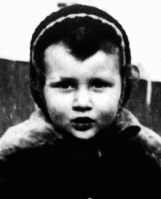
-
Smiljka Ljoljic Visnjevac
ID CardSmiljka was one of three daughters born to Serbian Orthodox parents in the town of Mostar in the central Yugoslav region of Herzegovina. Smiljka's mother died when Smiljka was 3, and the three girls were raised by their father. A tomboy in her youth, at 17 Smiljka won the Miss Makarska Riviera beauty pageant and left for Germany to become a fashion model. 1933-39: Smiljka had a successful modeling career in Berlin. With her tall, slim figure, high cheekbones, and almond-shaped, grey-blue eyes, she was…
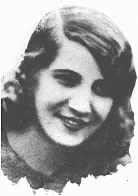
-
Claude J. Letulle
ID CardOne of five children, Claude grew up in a Catholic family in Paris. His father, a physician, owned a prosperous general medicine practice and medical laboratory. Claude's father encouraged him to study medicine and to join his practice, but Claude was more interested in becoming a lawyer. 1933-39: Claude continued his studies, and in 1936 he entered the university to study law. By mid-1939, Germany's threat against France had escalated, and on September 3, 1939, France declared war on Germany. Claude knew…
